How to program a perfect paradiddle using EZdrummer
This essential snare drum rudiment can revitalise grooves – follow our guide to emulating it in your DAW
A core sticking pattern – AKA rudiment – learnt by every drummer, the paradiddle is a particular series of four strokes that can be endlessly useful for embellishing beats and fills. The pattern comprises two single strokes followed by a double stroke, and is repeated fluidly as many times as required, the first stroke swapping naturally between the left and right hands with each ‘cycle”, and usually accented. So, that’s: RIGHT, left, right, right, LEFT, right, left, left, RIGHT, left, right, right, LEFT, right, left, left, etc.
What makes a paradiddle played on the snare drum sound different to a continuous run of single strokes is the accent at the start, and the tiny natural variances in timing and weight between the drummer’s stronger right (assuming they’re right-handed) and left hands. Moving out to the kit as a whole, the paradiddle’s alternating single and double strokes give the drummer a very easy option when it comes to adding spice to fills and linear funk to grooves.
There are three variations on the fundamental four-note (single) paradiddle, too. The double paradiddle adds two extra single strokes at the start: RLRLRR, LRLRLL; the triple paradiddle adds four single strokes: RLRLRLRR, LRLRLRLL; and the paradiddle-diddle adds an extra double-stroke at the end of a single paradiddle: RLRRRLL or LRLLRR.
In this walkthrough, we'll show you how to program paradiddles in Ableton Live, using Toontrack EZdrummer 2, but you can achieve the same results with any DAW and virtual drum kit.
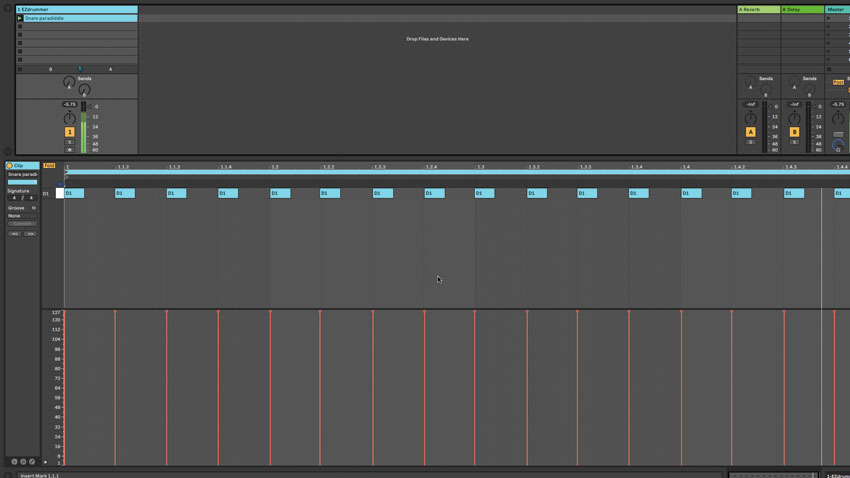
Step 1: Let’s start with the basics: a paradiddle played on the instrument it was devised for, the snare drum. We’ve turned off EZdrummer’s Humanize feature, so that everything sounds as it looks in the piano roll, and drawn a bar’s worth of 16th-note snare hits into a MIDI clip with snap turned off for subtle human timing variation.
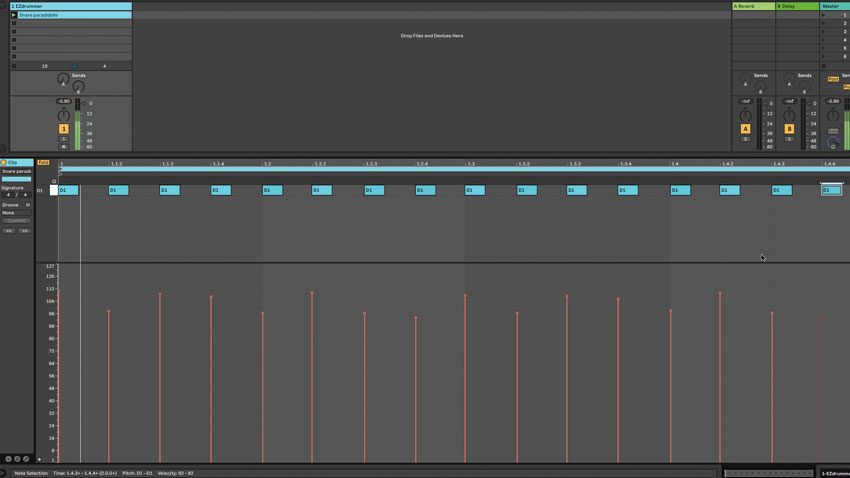
Step 2: With all hits at the same velocity, the sound is lifeless, since Humanize has been disabled. By tweaking note velocities to emulate the fluctuations of a drummer, we can make it sound like a paradiddle. We vary velocity levels, but make all the hits played by the stronger right hand a little harder than those played by the left.
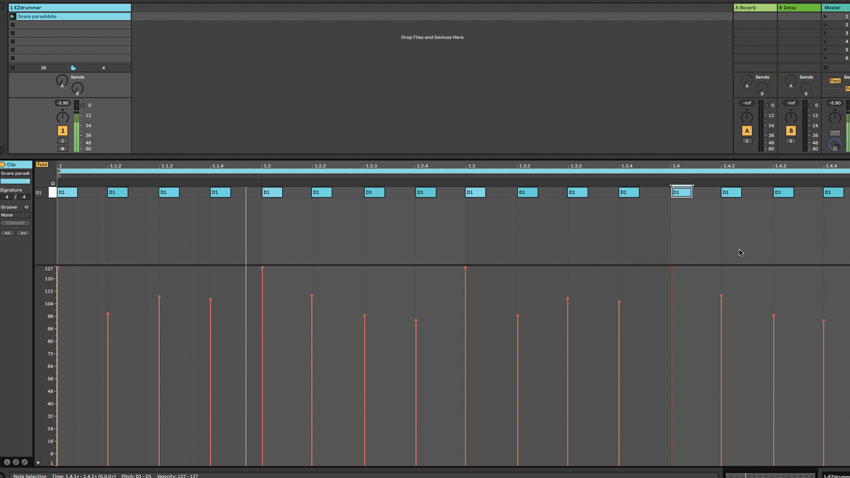
Step 3: You can now clearly see and hear the sticking and shape of our series of four paradiddles: right, left, right, right, left, right, left, left, right, left, right, right, left, right, left, left. Usually, a drummer will accent the first note of each paradiddle, and this is easily emulated by simply raising their velocities.
Get the MusicRadar Newsletter
Want all the hottest music and gear news, reviews, deals, features and more, direct to your inbox? Sign up here.
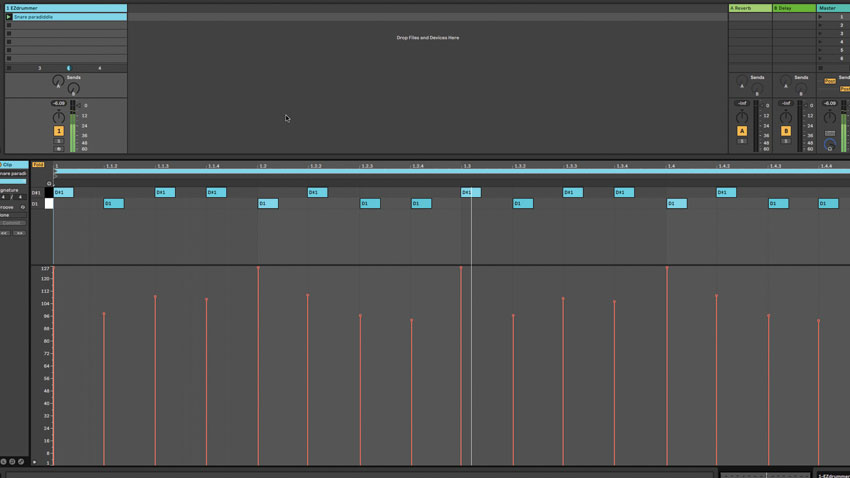
Step 4: If your drum kit instrument features separate left and right hand snare samples, use them. By moving all the right hand hits from D1 to our EZdrummer kit’s alternative snare articulation on D#1, the distinction between right and left hand strokes becomes more pronounced, even when the velocity is flattened.
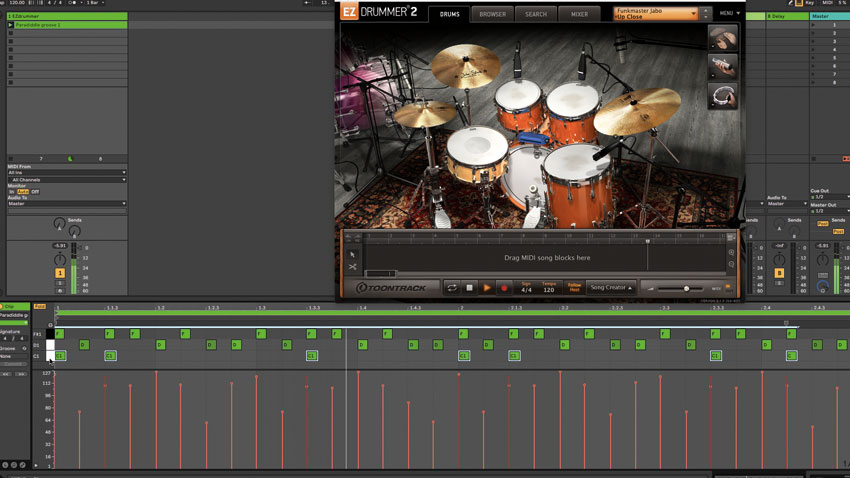
Step 5: You can use the paradiddle to make interesting semi-linear grooves and characterful fills. Here, we’ve simply transposed all the right-hand hits from our snare paradiddles to the hi-hats, played around with the velocities to bring out the backbeat and work in some syncopation, and added a kick drum.
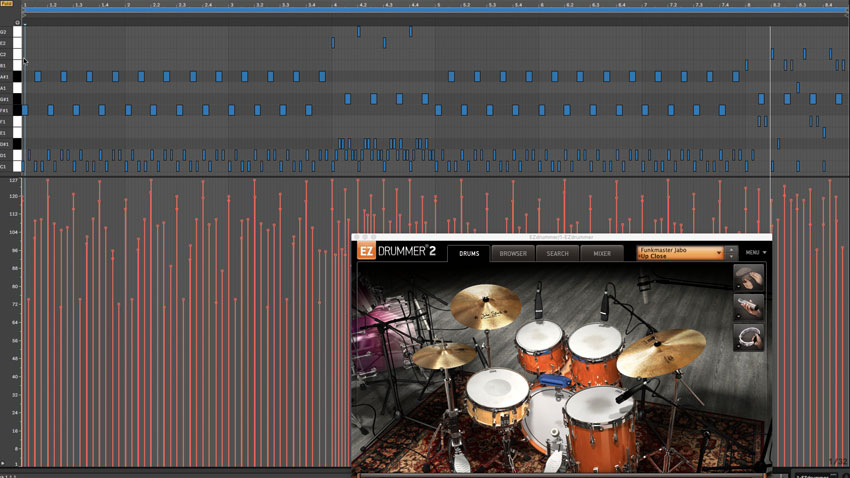
Step 6: In this example, we’ve got the kick and snare playing paradiddles with a hi-hat riding over the top, and paradiddle-based fills at the end of each four-bar phrase, the first blasted out very fast on the snare and crash cymbal, the second moving around the snare and toms.
Computer Music magazine is the world’s best selling publication dedicated solely to making great music with your Mac or PC computer. Each issue it brings its lucky readers the best in cutting-edge tutorials, need-to-know, expert software reviews and even all the tools you actually need to make great music today, courtesy of our legendary CM Plugin Suite.










